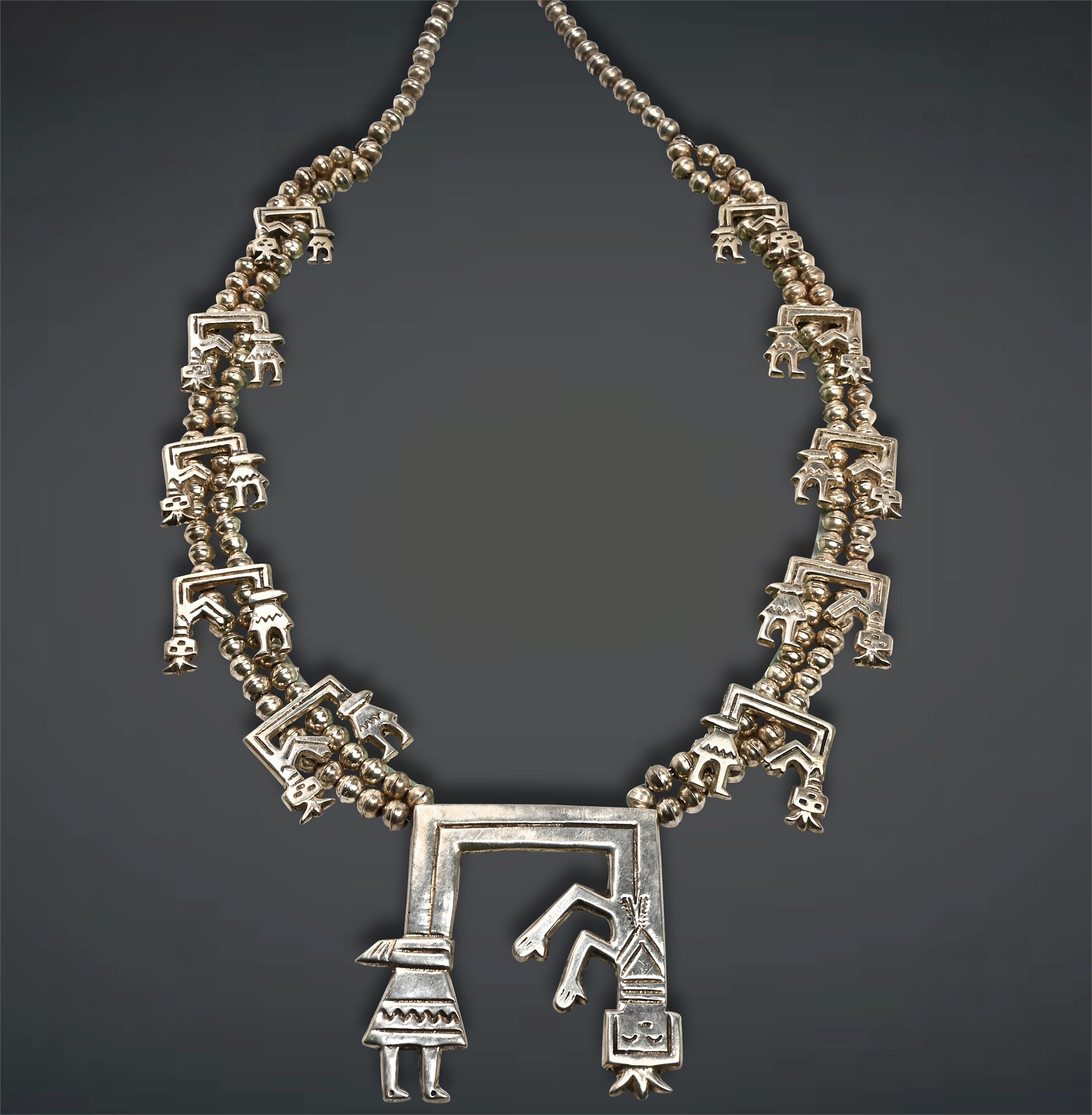Sterling Silver Yei Squash Necklace Hopi Native American Sand Cast View Watchlist >
- Winning Bid: $260.00
- 31 Bid(s) View Bid History
- High Bidder: Hiyakt
Seller Accepts Credit Cards
Payment and pickup instructions will be available on your invoice (under "My Account") at the conclusion of this auction.
Pickup
$0.00
Signature Confirmed Shipping
$15.00
Lot # JZ522
System ID # 14935632
Start Date
End Date
0 Watching
Sterling Silver Yei Squash Necklace Hopi Native American Sand Cast
This Squash Blossom Style Necklace features Yei figures, mythical beings that play a vital role in Navajo culture. Yei, a shortened version of YeiBiChi, represents a holy figure facilitating communication between the Navajo people and their Gods. According to one Navajo artist, "They are the keepers of the door to the other world."
Signed by Artist J. Ike. Measures 27" long with 10 small Yei figures and a central large Yei at 2.5" x 2.5".
Double row of Navajo bench beads. Mid 1950s. Weight: 111 grams.
- A Total of 10 Yei Figures, Graduating In Size
- Signed: J.Ike
- Sterling Silver
- Bench Made Beads
- Traditional Hook Clasp
- Sits Relaxed On The Wearer
The Squash Blossom Necklace features Yei figures, mythical beings that play a vital role in Navajo culture. Yei, a shortened version of YeiBiChi, represents a holy figure facilitating communication between the Navajo people and their Gods. According to one Navajo artist, "They are the keepers of the door to the other world."
YeiBiChi, the masked human dancers impersonating the Yei deities, participate in ceremonial activities. The Yei symbols symbolize various healing powers and are often depicted as petroglyphs in North America. In healing ceremonies, Yei figures are used to restore a person's balance or hozho, a Navajo concept encompassing harmony and balance in life.
Hozho, meaning harmony, goes beyond gaining balance; it involves maintaining it. To restore hozho, a hataalii (Navajo healer) may incorporate the appropriate Yei figure into a sand painting. The healing process involves drawing out the illness into the sand, followed by scattering the materials used in the painting to the Four Directions. This private ceremony, lasting up to 9 days, aims for the well-being of the individual.
Yeis are also woven into rug designs, notably from the Shiprock New Mexico area and northeast Arizona. Initially considered taboo in the 1920s, weaving sacred figures like Yeis into rugs became acceptable for artistic display, emphasizing their artistic merit rather than their original healing purpose.
There are male and female Yei figures, distinguished by square and round heads, respectively. These figures can be found in various positions, standing upright, curved, angled, and in a three-sided square.
Condition:
Good, We'll Leave The Polishing To You, Has Been Restrung
Size:
Weight: 111 g
Length: 27"
Smallest: 18.1 mm X 20.0 mm X 2 mm
Largest: 23.2 mm X 29.5 mm X 1.95 mm
55.5 mm X 59.25 mm X 1.75 mm
